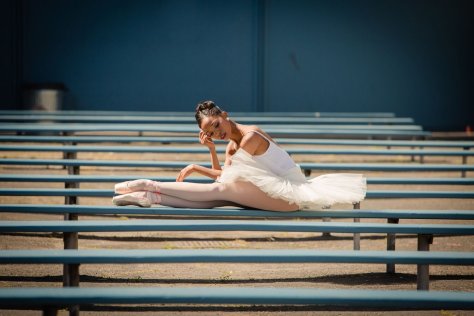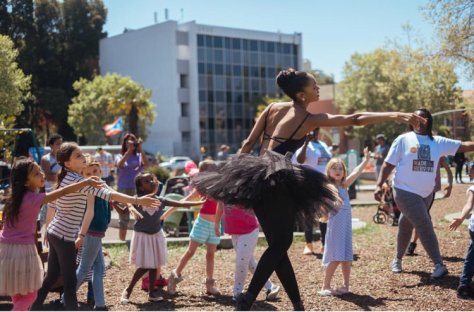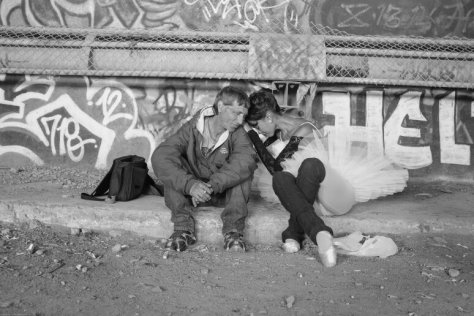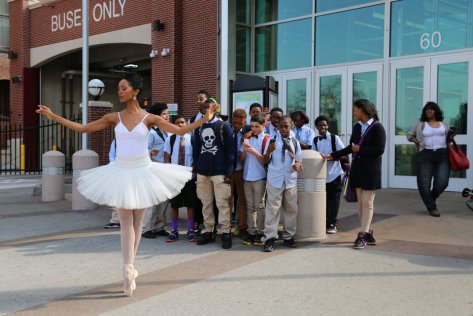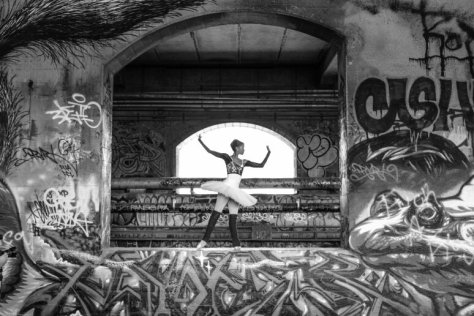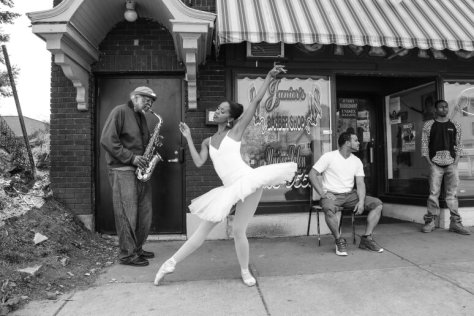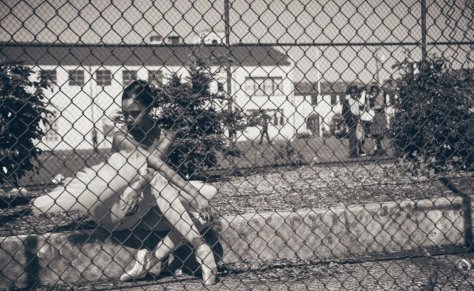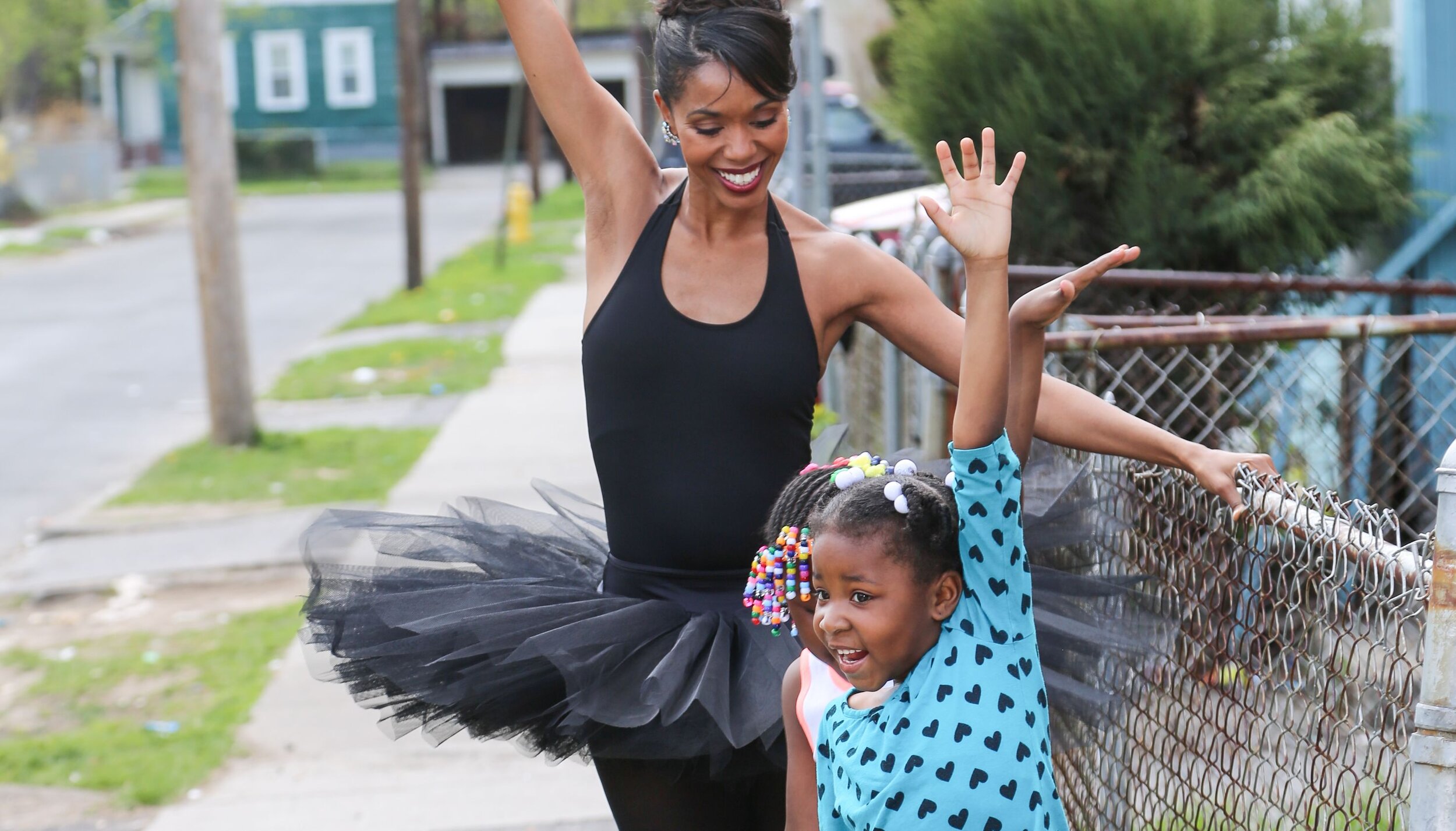
Aesha Ash was living the dream.
Sort of.
She’d attended the prestigious School of American Ballet by 13, and joined the New York City Ballet by 18. Both achievements no one could ever have imagined for the black girl from Rochester, a city whose claim to fame was an astronomical crime rate.
But this talented dancer would cry herself to sleep at night because despite performing on some of the world’s biggest stages and among some of its brightest talents, every day was a reminder that she couldn’t be more alone.
Being a ballerina at such an elite level was a challenge for anyone. But being a black ballerina at this level came with its own unique set of difficulties to overcome. Other girls teasing her about hair that didn’t gracefully tumble from its bun so much as it slowly fluffed, being turned away from the backstage makeup chair because there was nothing in her shade, and feeling every eye in the room burn into her when a tactless director scolded dancers who were spending too much time in the sun saying, “I don’t want to see any dark skin on that stage” were just a few of the thousand tiny cuts Aesha endured daily.
It reminded her of growing up in Rochester, where she & other inner-city students were bussed to suburban schools and the local kids couldn’t wait to remind her where she came from, constantly asking about drug dealers and shootings instead of accepting her as a regular kid not all that different from them. It seemed that no matter where you go, some things never change.
But there were also the handful of other times when a lone black woman would approach her after a show or recognize her on the street to thank her for just being present as an inspiration. It was those moments that revitalized and reassured her that she wasn’t as alone as she thought.
She spent 8 years with the New York City Ballet before dancing as a soloist in Switzerland, and finally moving back to dance in San Francisco, all along noting that no matter what stage she found herself on anywhere in the world, she was almost always the only person who looked like her. She retired in 2008, but not without realizing that she had a special insight and a special story that could change the whole landscape of ballet and black representation.
Her task was a tricky one though. The problems she identified were intersectional and that made them hard to attack from just one angle. Ballet is an art form with a constant financial commitment that she knew firsthand by how hard her parents had worked and how much they’d sacrificed to fund her continuing training. A lot of families couldn’t afford it, but inner-city black families disproportionately affected by poverty, single households and lack of transportation especially struggled to participate. Just coming from where they did made it hard for city dancers to break the class ceiling on a high art like ballet. And of course, like Aesha had, black ballerinas also find themselves fighting racism within the craft because no one checks their biases at the door, and since black women are constantly represented as angry, overly built, vulgar, loud and hypersexual, that’s how ballet’s elite who were so rarely exposed to real black women saw her too. In short, everything a stereotypical ballerina is not.
“That always frustrated me,” she recalls. “We’re human beings. We also have moments of weakness, of softness and sweetness and gentleness. Ballet embraces the soft, ethereal and majestic side to women, and yet we often don’t see the media portray black women in this light. I wanted to help change the demoralized, objectified and caricatured images of African-American women by showing the world that beauty is not reserved for any particular race or socio-economic background.”
Aesha decided that despite being retired, she could start by being an image of what was possible for little girls in her own community. So she began dancing right there in it, on the streets, sidewalks, anywhere. And then she photographed and shared those moments on social media. What she initially created to uplift girls in her own community soon became a global phenomenon, and The Swan Dreams Project was born.
“I was expecting young girls to like the images or say they were powerful for them,” she recalls. “But it was adult women [emailing me], saying the image brought them to tears, wishing they would never have given up their dreams. What not having representation meant to them. I found it very powerful.”
Swan Dreams isn’t just an inspirational and aesthetic project though, it’s functional too. Through it, Aesha’s raised money to create pointe shoe funds for students at the City Ballet of Los Angeles school to help relieve the equipment burden that forces many of them out of ballet. She’s remodeled run down ballet schools with new barres and floors so that students could receive proper training. She’s even teaching a free after-school program herself so that those who might go without the joy of ballet altogether have the opportunity to be a part of it. And when she was honored in 2016 by the National Women’s History Museum for her contribution to diversifying the arts, it was just one more step to making a difference beyond her little corner of the world.
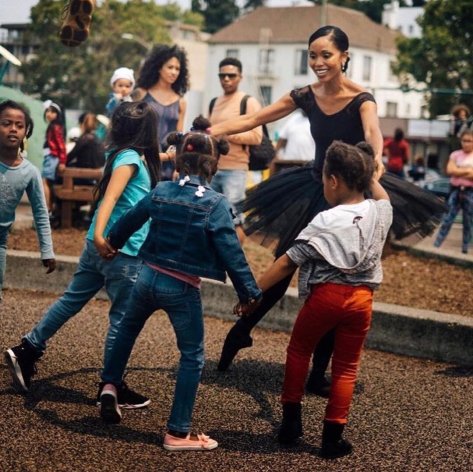
After 13 years dancing professionally, Aesha’s pirouetted right back to where she began, carving out space for little girls to reach beyond their limitations to bring diversity to ballet and claim a new image for themselves where their dreams don’t take second stage to the color of their skin.
KEEP GOING BLACK IN HISTORY:
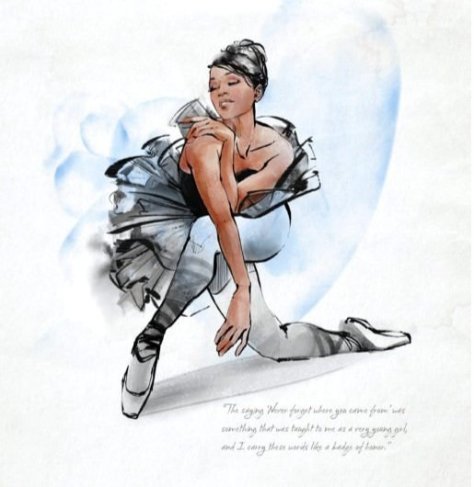
Learn more about The Swan Dreams Project, make an immediate donation, or purchase prints and other merch featuring gorgeous photos of Aesha dancing in the inner-city with the proceeds benefiting her organization.

